You are reading the older HTML site
Positive Feedback ISSUE
january/february 2008
Dingoes Ate My Baby …A Beaut Australian System for Reasonable Bikkies
Going Down Under with the Good Doctor - An Introduction to the REDGUM Audio System AND Introducing Alicia and Emily …Not Your Father's Audio System
[Photographs by Dr. S. unless otherwise noted; all image processing by David W. Robinson]

Introduction
Until I met Lindy Gerber, I knew Christmas from Bourke Street about Australian Audio. Plus, I thought Lindy was a bloke. Sheesh …I can be such a dag, at times
Well, Lindy is not a bloke, she is a Sheila …and a most charming one at that. Now, not that it matters in most cases what gender my contact is, but this time it does matter, so I mention it. Sotto voce, this is called "setting the stage."
At first I wondered if REDGUM was one of those resellers who are buying up Chinese pieces, putting a cool front plate on, and selling them under a different name. Not the case here. Chief designer, Ian Robinson, has been at his craft since the 1960s, and with the establishment of REDGUM he holds the unique distinction of producing the first "All Australian" audio system, from source to speaker.
Working with Vijayan Panikkar in the early nineties, the basic circuit design for the REDGUM amplifiers was roughed out and "black boxed." They thought the sound was "magical," and Ian asked Vijayan what the Tamil word for magic was (it is mundrum), but one hardly wants an immediate English association with humdrum for their new product, so "magic" in Tamil was a no-go.
Ultimately, the sleek and slim, MOSFET based amps were fronted with a native Australian hardwood, called Red Gum (beautiful stuff) and the name REDGUM was borne.
Red Gum is the iconic Australian Eucalypt hardwood, and this does correctly imply the association that all REDGUM products are handcrafted in Australia. Taking hardwoods as a group, Australian ones are remarkable above others for the degree of figuring (or fiddleback).This feature alone makes each unit visually quite unique, offering a shimmer of movement like a butterfly's wing as you move past it. Though called "red", as a wood Red Gum actually comes in a remarkable range of grain (straight through to burl) and colour ("shades of beige-"pink" through to a deep red- brown.)
It has only been in recent times that it has been possible to cut a veneer of Red Gum wood, such is its hardness.
One of the densest woods in the world, it actually floats under the surface of water!
And the choice of name? Well, Eucalyptus Viminalis subspecies Viminalis doesn't exactly roll off the tongue when compared to its common name, Manna Gum. Along with Red Gum trees, they are but two species of the many Eucalyptus trees Australia has brought to the world ...that are perhaps best known for koalas eating them. Koalas can't be too wrong, with gum leaves definitely appearing as their "food from the Gods"! As recorded since the most ancient of times, some plants have been known to produce a sugary sap, aided by insects boring the holes through which it oozes, which was then gathered as a source of food. In the case of this gum tree, the Australian Aborigines ate the sap once it dropped off the "manna" (the twigs) in bits. On another level, who can dispute that music provides us with such sweet nourishment for the spirit?
Ok, doc, why the extended treatment of the veneer material? First, to emphasize the fact that this stuff is truly Australian, which is particularly interesting in that we do not typically associate Australia with high-end audio equipment manufacture. Second, the appearance of this equipment is significant to the strategy I intend to use in the review, in that how it looks is also quite how it sounds. Its appearance also served to drive me towards what I think is a unique ancillary review process I will describe shortly.
The System
[Component images below courtesy of Redgum]
After some discussion, Lindy and I agreed that probably the best way to proceed was to get me an entire system, soup to nuts. This system consists of:
RGCD2 CD Player: unique in many respects, but perhaps most notably because the drive is built around a CD-ROM drive, allowing easy user replacement. The RGCD2 is their "base" model and now comes with a remote control.
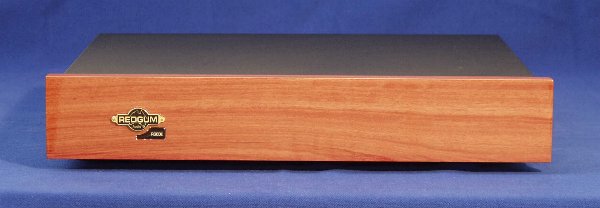
It offers some interesting differences from the typical CD player. First, the drive is a DVD drive and is easily replaceable or upgradeable. Second, the front face has to tip down to give access to the player.

When not in use, it is a featureless black box with that lovely wood showing. Again, the lack of Buck Rogers switches and dials tends to be a plus with non-audiophiles. Once visible, the display is easy to read and useful. The player boasts a Cirrus Logic CS8412 IC for re-clocking data and a data buffer. This DAC drives into the dual channel version (AD712J) of the Analog Devices ultra low noise BiMosfet single channel op amps.
The MSRP is USD $1990
RGi60ENR Signature Series Integrated Stereo Amplifier with Dual Mono Remote Control
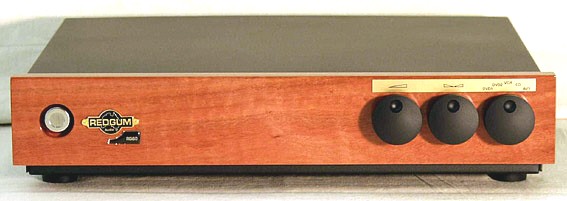
Rated at 75 watts/channel, the RGi60ENR is said to provide extremely rapid rise time and fast transient response, while maintaining "graceful" clipping behavior, the net result of which is a modestly sized amplifier with quite a bit of headroom. Unique in the diminutive integrated are dual mono, motorized volume controls. Long committed to the advantages of dual volume controls (very unusual at this price point), the decision to motorize them, was in response to ongoing feedback from consumers who found the dual manual controls too "hair shirt" for them. I am informed that this control has been considerably refined and smoothed since my unit was built. I have no complaints about how mine worked.
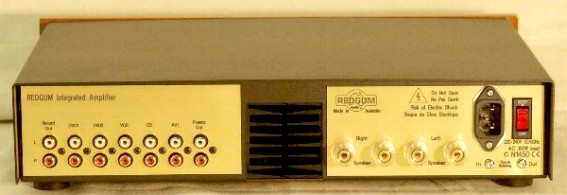
REDGUM places great importance in not having any relays in the speaker line. This is an important aid to improve both low-level detail and long-term reliability.
The MSRP is USD $2490
RGSB Manna Speakers
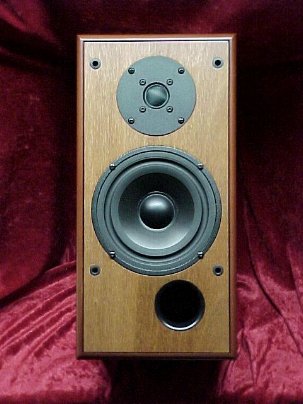
The RGSB are conventional 2-way "bookshelf" speakers of a medium size (18.3 kg/22kg = 48.4lb), done up in a satin version of the Red Gum veneer. The cabinet is a ported bass reflex design, holding a 25 mm soft dome tweeter, and a 165 mm polypropylene mid/bass unit.
Frequency range is given as 40Hz to 19kHz with a rated sensitivity of 92dB/W/meter and nominal 8ohm impedance. The speaker allows for bi-wiring.
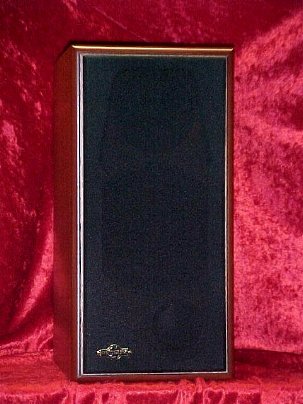
Construction is very good indeed, with care taken to make sure there are no sharp edges on the front. As with the electronics, fit and finish are first rate. Pretty things.
Internally the speakers feature high-voltage metallized polypropylene caps, heavy 1.6mm wire for the bass coil and internal hook-up throughout with 12 AWG OFC copper; air-cored inductors and wire wound resistors, and 5-way gold binding post connections.
MSRP for the Mannas are USD $2490 per pair.
REDGUM provides a limited seven-year warranty.
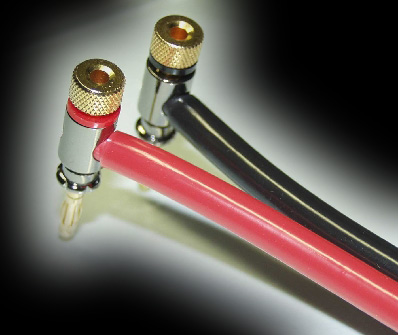
REDGUM WIRE
Expressive Line Speaker Wire
MSRP $35/meter
Audio Pipeline Interconnects
MSRP $85$/19.7 inches
REDGUM provided the lashups as part of the system. Those of you who know me know I use JENA Labs as my preferred cable set. BUT, I think it is important to at least initially follow the manufacturer's recommendations.
I also wanted to introduce the question of, "Do cables have a sound?" to Alicia and Emily …who have absolutely no pre-conceptions about the matter (more on this later).
According to the manufacturer, the "10 square mm" of the REDGUM RGAEL Hi Damping Factor cable translates into 7 gauge (7 AWG). This is about 20 times the amount of copper strands that were in the original Monster cable that set the reputation for "fat" cables.
Terminations are of very good quality.
Getting Started
Australia is a long ways from Oregon. REDGUM packed this stuff like it was going on the space shuttle! As I worked my way through the multiple levels, cursing like a stevedore, I grew to appreciate what a labor of love this is for this quirky bunch of Aussies.
What emerged, unscathed, was this series of delicate, glossy …red and black rectangles; a three-piece ensemble, with shoes and purse.
Now, I said quirky, and I mean quirky …you get a key with the equipment, which you have to use to turn the amp on (master toggle in the back). You have to drop the front down to get to the CD player, and then it's not a CD player, it's a DVD player, that they use to play CDs. It makes weird (but safe) noises when you fire it up. It comes with two of those little credit card remotes. Comes with bananas on the speaker cable in place, so you don't have to fight with those silly EU speaker terminals.
I alternately was charmed and confused. While it was not quite as much of a culture shock as trying to read a translated Chinese tube amplifier owner's manual, it was certainly not mainstream American audio either.
My GF happened to come by as I was hooking it all together, and she was immediately drawn in by its appearance, having to touch each piece and examine it carefully. She made appreciative noises through the process. Fellows, take this as a good sign.
Hmm, one of the principals of the company is female …my resident female is immediately enchanted before we even fire it up …the stuff is gorgeous in a very refined and delicate way …data points mounting up in my head.
We sit down and listen to music. Cold and stiff, it is still very listenable. Again, I am struck with the almost feminine qualities …delicacy, refinement, and poise. Not to say that it can't rock, but it does it with that bare sweaty midriff Gwen Stefani approach, not some hairy tattooed troglodyte. Poised, collected, feminine.
GF was immediately hooked and said she liked it better than my reference system, which shocked me into asking why, and again, her response was something to the effect of, how "intimate" it was. Again, fellows, take note.
Now, no reference system can beat a one-characteristic judgment, but Peggy has great ears and I understood what she meant. She could sit closely to the speakers and have a more intimately sized and presented experience, which works for her. I think it works for others too.
My reference system is a hulking pile of black and gray rectangles and squares, a Fritz Lang mass of racks, boxes, filters, stands, wires, cables, black columns of various sizes and numbers; it is big, and frankly, a bit intimidating.
This REDGUM system Peggy immediately connected with personally.
And this gave me the idea.
Why are women largely absent from this hobby? Why are we having trouble attracting young people? Have we in, in truth, as Harvey ‘Gizmo' Rosenberg once opined, become a cult of old white men who can't dance?
The PLOT
First, I will offer my disclaimer. I don't honestly think that electronic equipment has a gender leaning, or that the REDGUM system would necessarily be more satisfying for men or women …but the idea of masculinity and femininity in this stander-dominated hobby interests me a great deal.
So, be patient with me while I explore this premise and forgive me for any inadvertent stereotyping. I do so to illuminate, not to categorize.
Peggy's adult daughter, Emily, is as passionate about music and film as any audiophile/videophile I know. She loves music from Frank Sinatra to Modest Mouse …and she is constantly attending live events. Her roomy, Alicia, is the same. They were fascinated with my system and collection and Emily and I exchange discs on a regular basis (Emily gave me the Kronos Quartet sound track from The Fountain …I gave her Stacy Kent and Blossom Dearie).
But, they are female, and young, and their kind is more or less completely absent from our numbers. What interests me is that they are bright, educated, articulate, and as serious about music in their lives as anyone who reads this mag.
So, I decided to try something.
I suggested that they were the perfect people to really understand this REDGUM system (female, delicate, and lovely), and that us old crabby white guys would benefit from making some room for diversity in this musty old hobby of ours.
After some questioning glances to see if I was serious, they came over and broke the system down, took it to their 100 year old upstairs flat, and reassembled it, with only minor coaching from me. (I explained polarity to them, I am sure someone associated with PFO would have found the explanation both inaccurate and heart-warming.)
They turned it on, and put on some music. I got to watch their faces as they tuned out their surroundings, sat down together in the sweet spot and exchanged appreciative glances. They were hooked.
So, while I fully intend to address the issue of "But Doc, how does it sound?" first I want to introduce you to Positive Feedback Online's newest contributors: Alicia and Emily.
Dingoes Ate My Baby - Part Deux: Not Your Father's Audio System - Alicia and Emily go to Australia
Alicia & Emily, an introduction

We are Alicia and Emily …Alicia is the blonde …(note cool pics).

If you will excuse the generalization, audiophiles seem to be most often male, and most often they are (or at least, were) dorks. And we do mean that in the nicest way.


Not us. We are the young women your teenage daughters try to emulate. In some ways, we are probably your worst nightmare. There is a gulf of decades and culture, and most likely gender that separate us.
But here is what we have in common…
We listen to as much music as you do, maybe more, and we probably go to a lot more live events than you do. We know as much about our musical genres as you do yours, and probably more about yours, than you do about ours.

Sure, we listen to Sonic Youth, but we also listen to Frank Sinatra, and as we begin this, we just finished listening to that painful, last recording Billie Holiday made (Lady in Satin), on SACD, on Dr. Sardonicus's system.
Before we talk about our experience with the REDGUM equipment, you probably want to know who we are, and what we know.
Who we are and What we Know

As you might imagine, at our respective ages (Emily is nineteen, Alicia, just eighteen), first and foremost we are college students. Because we are the age we are, we don't have the foggiest notion of what we want to do when we grow up. Emily is taking biology, writing (of course) and English Fiction; Alicia is taking trig (brainy) and other boring college foundation classes.
We live in an upstairs flat in a turn of the century Craftsman house on a tree-dappled street in Salem, Oregon with another of our friends, Lindsay, and our two cats, George and Theo.

As you might also imagine, we listen to a lot of alternative rock, indie, folk, and other styles with great beats, but we also love the Beatles, Sinatra, Led Zeppelin, Cat Stevens, Dylan, Bob Marley, and experimental forms (Trip Hop, like Portishead, "mix" groups such as Cut Chemist, Chemical Brothers and host of others). Basically, hip-eclectic.
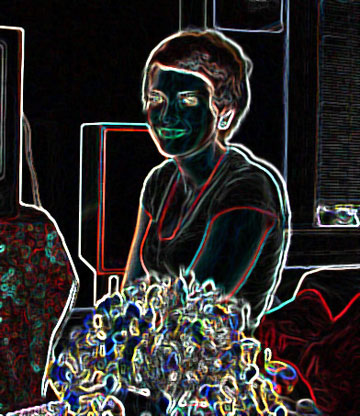
We go to a LOT of live events at least twice a month, and full concerts when we can afford it. Our last big event was Modest Mouse and Incubus at the Gorge. [Editor's note, this is an incredible, natural-formation amphitheater along the Columbia River, now famous in the area for world class concerts… Dylan has played there.] So, basically we know what "live" sounds like.

We know Dr. Sardonicus because he is Emily's mom's squeeze. Not a bad old guy and a pretty good cook. He had this weird idea about having us write about audio equipment.
We were surprised …and a bit nervous. It's kind of a closed club you guys run and the price of admission is far beyond us.
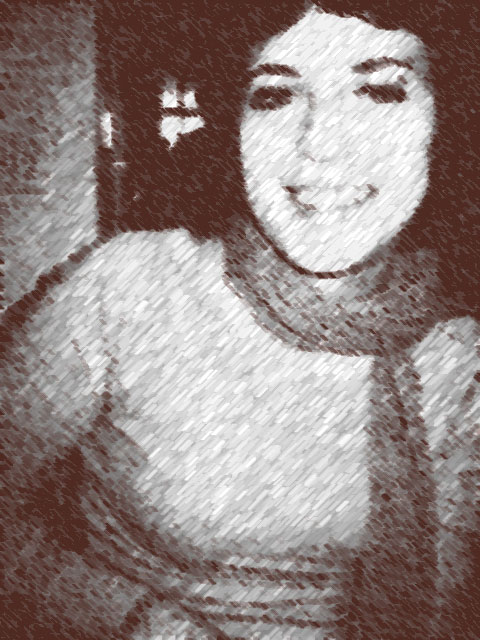
But music is as much a part of our daily life and anyone's. It's pointless to even make an effort to clean the flat without music, or drive, or cook, or anything else of consequence. Can't remember a time we were both apathetic to the sounds… just born that way.
Some of our biologicals were into music; Emily's mom manages to put up with the Doctor and his place, which is like a shrine to audio equipment. She also remembers Emily writing her a "ticket" for one free jazz listening (apparently Emily did not appreciate jazz as a youngster). And Alicia's uncles are in a band (an instrumental jam band sort). But unfortunately, no one we knew had a good audio system.
Getting Real
After discussing it several times, one day the Good ol' Doctor called up and demanded we come and get the equipment, which we did, cause he is big and scary and feeds us occasionally.
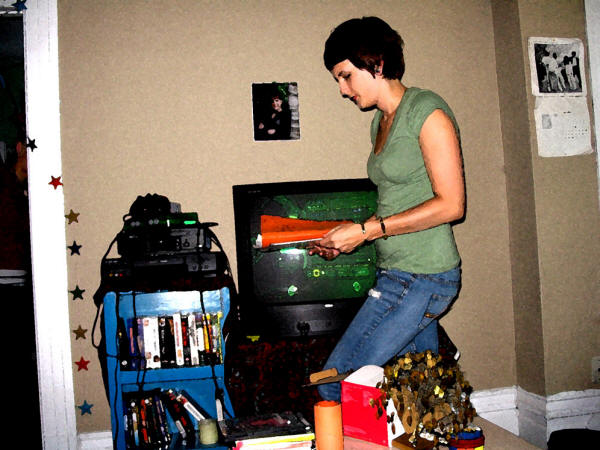
We hauled the stuff up the stairs and started the set up.
To survive in this electronic world, young women need to know how to do this stuff. It looked complicated, but it was really easy. A couple of questions and some well-placed instructions from the doc, who mostly sat there and giggled at us, (see photos) and we had the REDGUM system up in running in under a half hour.
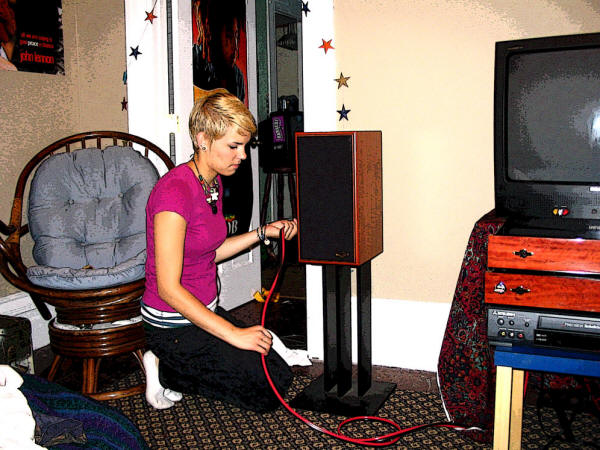
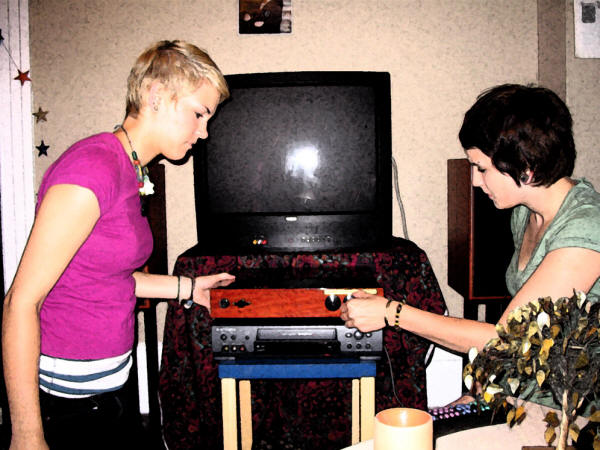
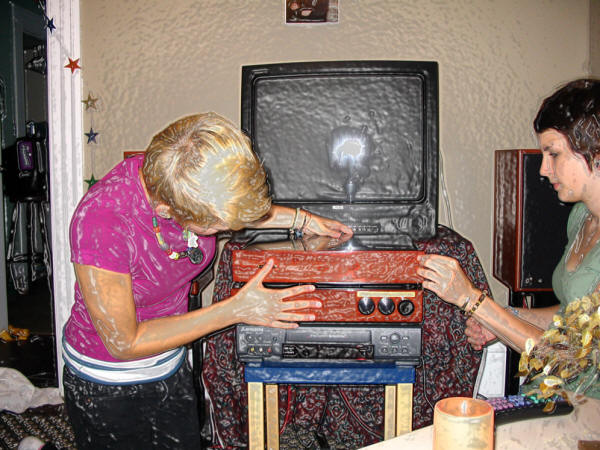
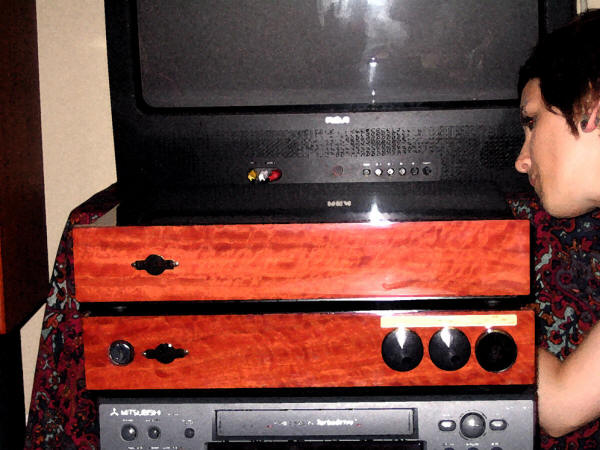
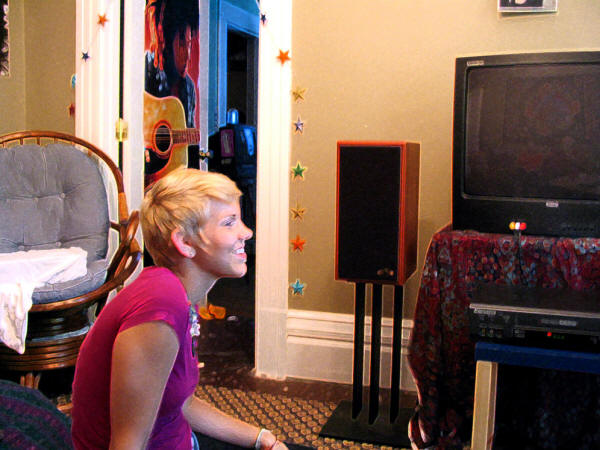
Turn the key, which is so cool, and SOUNDS! [Editor's note: They put the system together and it worked the first time, something a lot of audiophiles don't accomplish.]
Initial Reactions
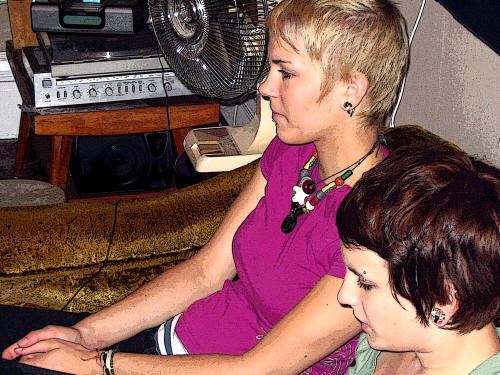
During that first listening session we became aware of how much more there was in familiar recordings. It was like being at a live concert, but no crowds, no distractions, only pure silence embracing each strum and every note perfectly; a private concert preformed for us in the grandest theatre imaginable.
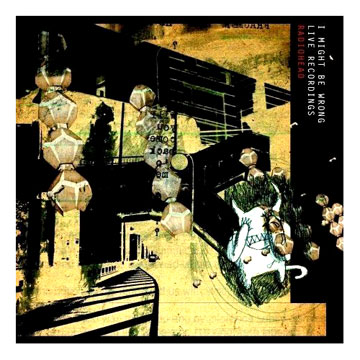
We listened to the live-recorded Radiohead "I Might Be Wrong." (ASIN: B00005QXXO). We could hear the guitarist's fingers sliding across the fret board, the singer inhaling between verses, and background effects we had never heard before.
Before this time we had rarely sat down between two speakers simply to listen to our music. This was a change.
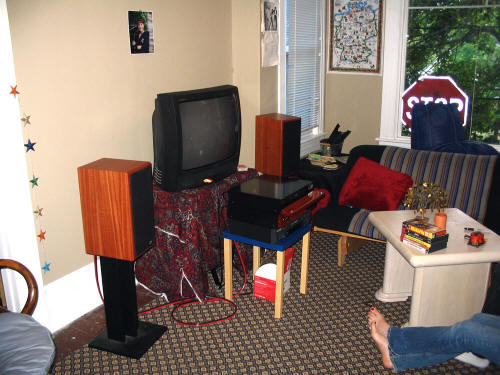
OK, so maybe it doesn’t look like Doc S.’s place…
Our sources have largely consisted of crappy CD players, iPods (Emily doesn't really like hers), Emily's turntable, car radios... you know the sort. Alicia has a really good car stereo; someone installed it before she bought her Toyota.
Compared to our cheap Panasonic CD players from WalMart, the sound on the REDGUM equipment was impeccable. We were introduced to a whole other world of audio entertainment, something that happens to very few people.
Buds
Alongside with having an amazingly high quality stereo system in our flat, we got to brag to our friends about it too. They were quite impressed (as we could tell from the looks on their faces) with the Aussie CD player, although, our cats were very miffed because we always had to turn the volume up to experience the full sound.
Living with REDGUM

As the summer months passed, we grew to love the system more and more. The Doctor gave us a copy of Stacy Kents' album, Dreamsville (ASIN: B00004ZAYM). As soon as her amazing voice came out of those speakers, our love for jazz was born. Comparing REDGUM to Emily's Panasonic, it really was "dreamsville."
The system seemed so feminine when those types of discs were played on it. The sound echoed in the soft and sleek outer appearance, which is simply lovely.

Our taste in music has definitely changed, taking a turn for the more sophisticated. When one of us turns on the measly car stereo, it's a painful experience now. Why? Because we have been living in musical luxury ever since this pretty little stereo was placed in our hands.
All of us (including our roomie, Lindsay) were all so paranoid about damaging the REDGUM equipment; we became frazzled even if we lost that danged little credit card remote.
During one incident, Emily and Lindsay got deathly worried about the system because it wouldn't turn on. While we were busy doctoring it and trying to deduce what had happened, Alicia walked over and plugged in the cord and voila! It worked! Of course, we all felt stupid. A real audiophile would have immediately known what had happened, right? (wink).

Another favorite disc of ours on the REDGUM is Broken Social Scene's latest self-titled album (ASIN: B000AP2ZTE). The music has overlapping rhythms and electronic effects, along with acoustic guitars and euphonious beats, making it all the more interesting to listen to. The system seems to bring out the best, and worst (for those whiny, nasally singers that somehow appeal to a wide majority of listeners today).
With the REDGUM system we have experienced audio in its purest and most delicate form.
The remote alone is something truly remarkable; this tiny little piece of plastic that weighs absolutely nothing, but can control your whole music experience. It also can be lost very easily (e.g. lost in the couch cushions, dragged away by the cats, or just simply misplaced) so keep it near and dear!
The wood that surrounds the speakers can only be described as something that you would never see here in America; pure, red wood (Hence the name REDGUM).
Compared to Dr. Sardonicus' monstrous stereo at his home, the REDGUM still seems just as high quality. Even though the Dr'.s is louder, they both still have the same even precision and smooth sounds.
REDGUM has never failed at amazing us with its impeccable sound. Every time we have a friend over they ask us where we have acquired this beautiful device and we always have the pleasure of bragging to them about how this came to us.
Conclusion
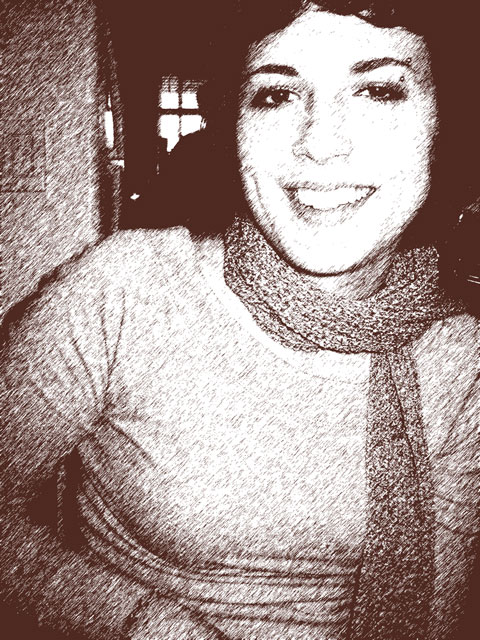

All in all, REDGUM would be an audio system we would most definitely purchase (that is, if we could afford any spending money).
For now we can bask in the radiance of the music it plays, and dread the day that we have to return it to the doctor.
Emily and Alicia
Post Script - Of course the Doctor always has the last word…
Frankly, when I started this project, I figured I would have to do quite a bit of end-tucking and closure-making …but this turns out to be a misapprehension.
The REDGUM system is carefully designed and executed. It has performed without operational flaw since we unpacked it. It is a thing of beauty, both visually and sonically. Alicia and Emily said it best, "impeccable." This is terrific stuff and the company is a hoot to know. Cheers, Lindy, y'all make fine stuff down there!
But there is a lesson here I hope does not go unheeded. Very often we audiophiles are a closed group for no other reasons than our own clannishness and the cost to join the hobby.
We talk in disparaging terms about the taste and feckless nature of the young, just as our elders did when describing us, and each generation that follows or precedes us.
More than at any time in history there is quality, affordable audio out there, and I believe young people are as interested in music as ever they were.
Reach out and create some new audiophiles. Find a home for your cast offs and seconds, so they will be used and treasured once again.
Put someone on the rocky and neurosis-strewn path we all walk.
Believe me, they can tell the difference between crap and fidelity, and once bitten, many of them are part of the coven for life.
For me, I plan to continue to plague these two with demands that they apply their particularly unique perspective to this hobby.
And for those harrumphs and shocked hisses …try to remember when this was new, and you were actually fun to be around.
Doc S.
